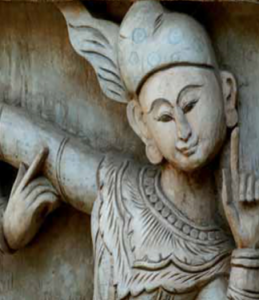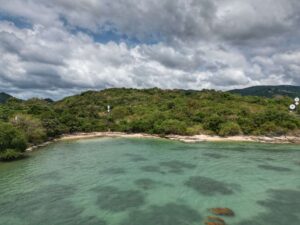History and Regime
The Far East in general and Thailand in particular, have enjoyed in recent years economic and tourism flourish. As a result, the area provides a wide range of Investment opportunities in enterprises as well as in tourism /expats related projects.
Thailand is a Southeast Asian country with a strategic location, a stable government, a growing economy, and a vibrant culture. These factors make it an attractive destination for tourism, business, and investment.
Thailand was never colonized by a foreign regime. During various eras in history during which its neighboring countries, in Southeast Asia, were under European reign or Communist ideology, Thailand remained an independent monarchy. Nonetheless Western culture has its influence, for better or worse, yet traditional Thai culture is strongly preserved, and continues to prevail in current modern life. During the Vietnam war, Thailand was a central and important base for the American Army, which brought in foreign capital and contributed to Thailand’s Industrialization and economic growth.
In 1992 a new Democratic Constitution was adopted. The current official form of rule is a democratic Constitutional Monarchy.
There are two legislation houses, Inspired by the British model with minor modifications. New changes were Introduced to the Constitution, including mandatory election, the public’s right to receive information from any governmental office, mandatory free of charge 12 year Education Law, the right of local communities to manage and use natural resources in their region, and formation of committees to fight against corruption and for human rights.
Thailand’s Royal house remained a symbol and was stripped of any authority, but it was accepted as a mediator in times of need.
General data:
Area: 514,000 sq. km.
The eastern coastline along the Bay of Thailand is approximately 1500 kilometers long.
The western coast, along the Andaman Sea, is about 580 kilometers long in addition to dozens of islands.

Populations
75 million people (estimated)
Religious distribution: 95.5% Buddhists, 3.8% Muslims, and 0.7% Hindu, Christians, and others.
Ethnicity: 80% Thai, 12% Chinese, Malaians and Kumar.
Population density: 118 people per sq. kilometer.
Life expectancy: 79.3 years
Adult literacy rate: 95%.
Close to 11 million people live in the capital city Bangkok.
Climate:
The year is divided into 3 seasons.
The hot season from April to May is over 30 degrees.
The rainy season is from June to October and has between 2000mm to 3000mm. of rain.
The “dry” season is from November to March-between 20 to 25 degrees.
The Far East in general and Thailand in particular, have enjoyed in recent years economic and tourism flourish. As a result, the area provides a wide range of Investment opportunities in enterprises as well as in tourism /expats related projects.
Thailand is a Southeast Asian country with a strategic location, a stable government, a growing economy, and a vibrant culture. These factors make it an attractive destination for tourism, business, and investment.
Thailand was never colonized by a foreign regime. During various eras in history during which its neighboring countries, in Southeast Asia, were under European reign or Communist ideology, Thailand remained an independent monarchy. Nonetheless Western culture has its influence, for better or worse, yet traditional Thai culture is strongly preserved, and continues to prevail in current modern life. During the Vietnam war, Thailand was a central and important base for the American Army, which brought in foreign capital and contributed to Thailand’s Industrialization and economic growth.
In 1992 a new Democratic Constitution was adopted. The current official form of rule is a democratic Constitutional Monarchy.
There are two legislation houses, Inspired by the British model with minor modifications. New changes were Introduced to the Constitution, including mandatory election, the public’s right to receive information from any governmental office, mandatory free of charge 12 year Education Law, the right of local communities to manage and use natural resources in their region, and formation of committees to fight against corruption and for human rights.
Thailand’s Royal house remained a symbol and was stripped of any authority, but it was accepted as a mediator in times of need.
General data:
Area: 514,000 sq. km.
The eastern coastline along the Bay of Thailand is approximately 1500 kilometers long.
The western coast, along the Andaman Sea, is about 580 kilometers long in addition to dozens of islands.

Populations
75 million people (estimated)
Religious distribution: 95.5% Buddhists, 3.8% Muslims, and 0.7% Hindu, Christians, and others.
Ethnicity: 80% Thai, 12% Chinese, Malaians and Kumar.
Population density: 118 people per sq. kilometer.
Life expectancy: 79.3 years
Adult literacy rate: 95%.
Close to 11 million people live in the capital city Bangkok.
Climate:
The year is divided into 3 seasons.
The hot season from April to May is over 30 degrees.
The rainy season is from June to October and has between 2000mm to 3000mm. of rain.
The “dry” season is from November to March-between 20 to 25 degrees.



